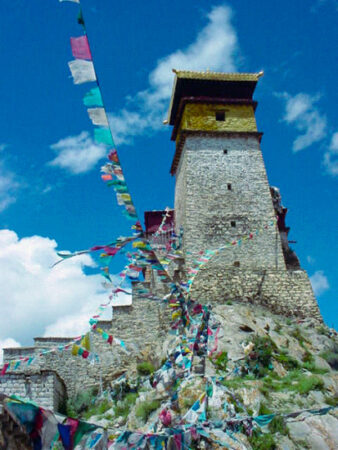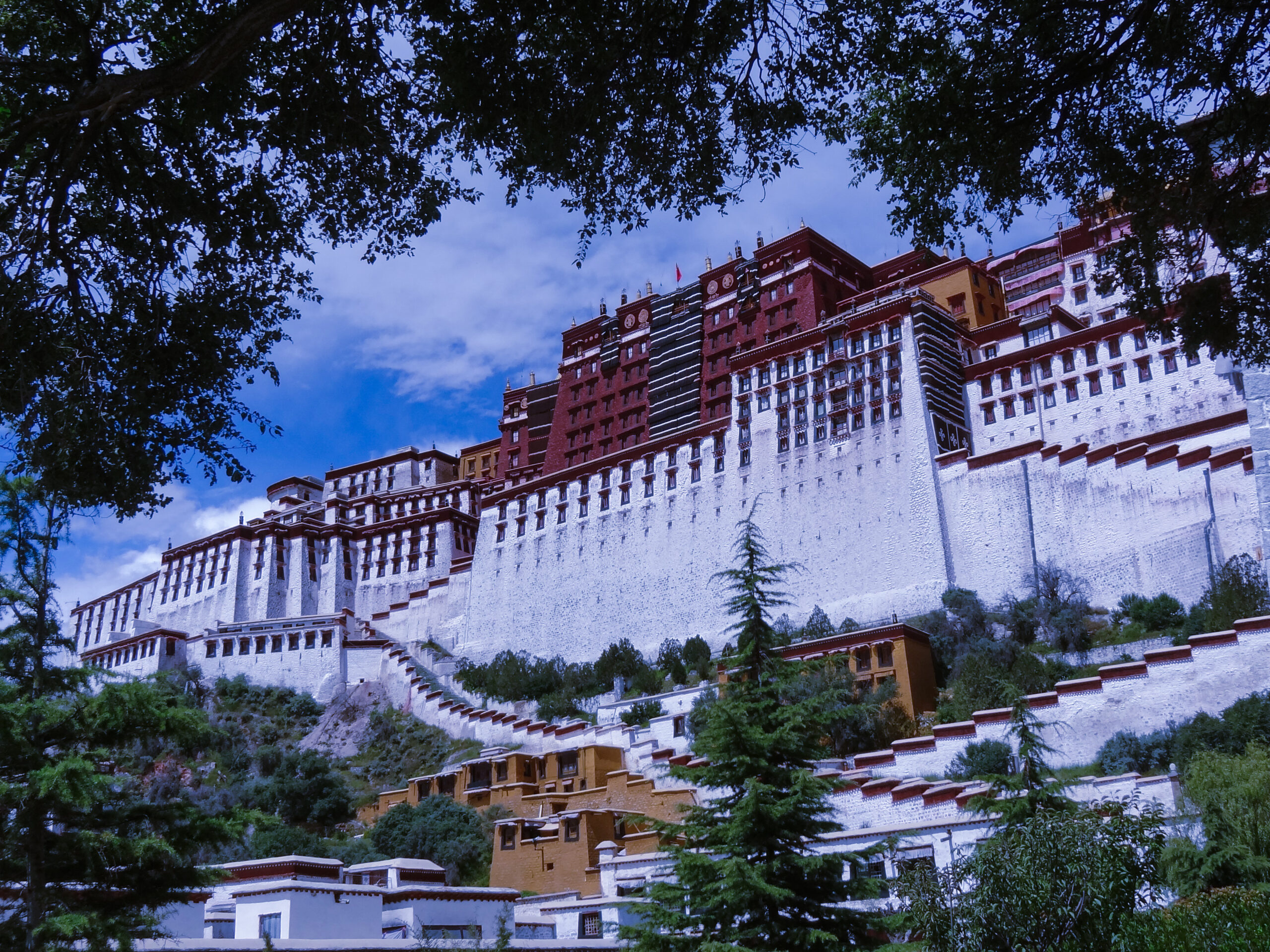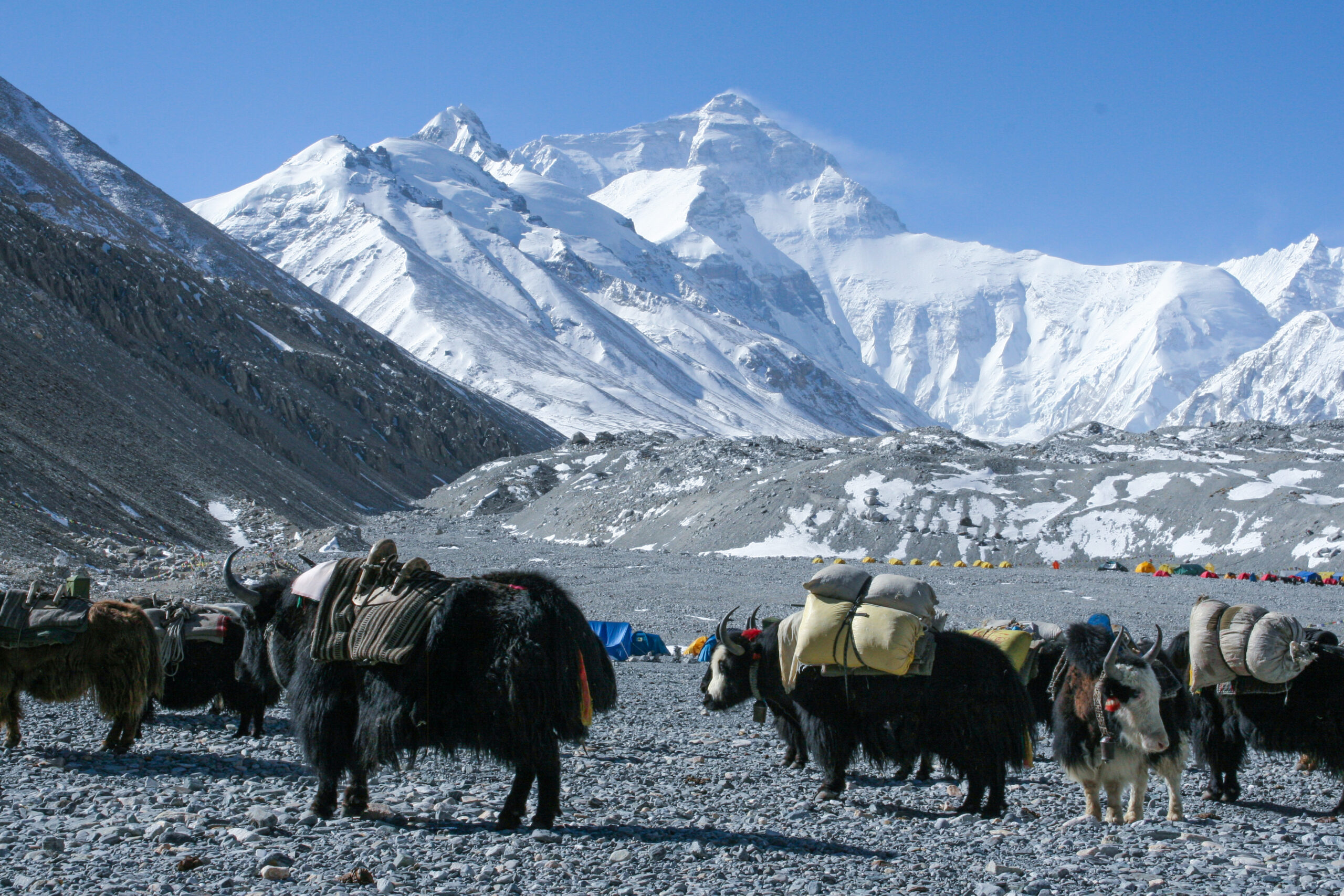Tibet Tour – Central Tibet & the Yarlung Valley
Duration
What you will See & Do
Dominated by the awe-inspiring grandeur of the Potala Palace and bustling with pilgrims circling the sacred Jokhang Temple it is a feast for the senses.
The Yarlung Valley, east of Lhasa, is one of the most historically significant regions in Tibet and is home to some of the most important cultural landmarks. Yumbulakhang, fortified palace of the first Tibetan kings has stood for over 1000 years; Samye, on the banks of the Yarlung Tsangpo (Brahmaputra), is Tibet’s oldest monastery and one of its most beautiful. The lure of Lhasa, capital on the roof of the world, cannot be under-estimated and it is truly a fascinating city, fully justifying its reputation.
Cross the spectacular Khamba-La (pass) with the turquoise waters of the sacred lake, Yamdrok-tso, spread below. Prayer flags, glaciers, snow covered mountain ranges - the scenery is incredible! Gyantse stands at the junction of trade routes from India and retains the feel of a Tibetan town. The forts and well-protected monasteries of Gyantse and Shigatse reveal a not always peaceful history - the riches within, testament to past glory
Itinerary
Day 1: Arrive Lhasa
Arriving in Lhasa, visitors will be greeted by the stunning natural beauty of the Tibetan plateau. The city is situated at an altitude of over 3,686 meters above sea level and is home to many significant cultural and historical sites. Transferring to the hotel catch your first glimpse of the city and its unique architecture, which is heavily influenced by Tibetan Buddhism.
Your arrival day is relaxed with no set activities in order to allow your body to adjust to the effects of altitude. A welcome dinner is included this evening.
Day 2: Lhasa sightseeing: visit Drepung, Nechung & Sera
Lhasa is a city steeped in culture and history, and the visit to the Drepung and Sera monasteries a highlight for anyone interested in Tibetan Buddhism. The Drepung Monastery, located about 5 kilometres out of Lhasa city, was once the largest monastery in the world and served as the residence of the Dalai Lamas until the 5th Dalai Lama moved to the Potala Palace. Sera Monastery, on Lhasa’s northern foothills, is known for its unique tradition where monks engage in lively philosophical debates. Visitors can witness these debates and explore the beautiful grounds of the monastery.
You have the time, and the option, to include Nechung, the temple of the state oracle (located close to Drepung) and/or the Norbulingka, summer residence of the Dalai Lamas to the west of the Potala.
Day 3: Lhasa sightseeing: visit Potala, Jokhang -Barkhor.
The spiritual heart of Tibet is the Jokhang Temple and is full of life as pilgrims bring offerings of butter and barley flour. The Potala Palace rises above the city and, more than any other sight, symbolises the history and culture of Tibet – it is a UNESCO World Heritage site and was once the winter residence of the Dalai Lamas and contains more than 1,000 rooms and chapels.
The Barkhor, the holiest devotional circuit, circumnavigates the Jokhang and houses a market bazaar. Here, Buddha images, yak skulls with ruby eyes, woodcarvings, carpets and prayer wheels are bargained for.
Second in importance only to the Jokhang, the Ramoche was built to house the Jowo Shakyamuni statue brought by Princess Wenchang as dowry in the C7th until it was later moved to the Jokhang. Each of these sites holds a unique place in Tibetan Buddhism.
Day 4: via Dorji Drak to Samye – visit Samye Gompa
The spiritual heart of Tibet is the Jokhang Temple and is full of life as pilgrims bring offerings of butter and barley flour. The Potala Palace rises above the city and, more than any other sight, symbolises the history and culture of Tibet – it is a UNESCO World Heritage site and was once the winter residence of the Dalai Lamas and contains more than 1,000 rooms and chapels.
The Barkhor, the holiest devotional circuit, circumnavigates the Jokhang and houses a market bazaar. Here, Buddha images, yak skulls with ruby eyes, woodcarvings, carpets and prayer wheels are bargained for.
Second in importance only to the Jokhang, the Ramoche was built to house the Jowo Shakyamuni statue brought by Princess Wenchang as dowry in the C7th until it was later moved to the Jokhang. Each of these sites holds a unique place in Tibetan Buddhism.
Day 5: visit Yambulakhang - drive to Gyantse via Yamdrok Lake
The resplendent hilltop structure of Yumbulakhang is reputedly a reconstruction of Tibet’s oldest building - remarkable mainly for its watchtower, now unique in Tibet, but once one of many. Dalai Lama V’s gold roofs and Songtsen Gampo’s chapels were destroyed during the Cultural Revolution and the current structure dates from 1982.
Continue on one of the most scenically memorable routes in Tibet, to Gyantse.
From the top of the Kamba Pass (4794m) the views of the turquoise lake, Yamdrok-Tso are unforgettable. The road winds down and along its shores via the small town of Nangartse before climbing again to the Karo La (5054) and the glaciers of Mt Nojin Kangtsang. Gyantse was once of major importance as a trading centre on the routes between India, Sikkim, Bhutan, Tibet and China, its imposing fort, Gyantse Dzong, dominates the skyline.
Day 6: Visit Pelkor Choede Gyantse Kumbum - drive to Shigatse - visit Tashilumpo Monastery
Pelkhor Choede is a unique blend of Tibetan and Nepalese architectural styles was established in the C15th as an ecumenical community, eventually comprising 18 colleges representing different traditions of Tibetan Buddhism – Gelukpa, Karma Kagyu, Sakyapa, Shalupa, Drukpa Kagyu …
Within the complex stands the Gyantse Kumbum, a large and impressive chorten (stupa) containing over 100,000 images and is considered one of the best examples of Tibetan art.
The drive to Shigatse takes travellers along a valley filled with farmlands and small villages.
Shigatse is the second-largest city in Tibet and is home to Tashilumpo, one of the largest and most important Gelugpa monasteries in Tibet. Tashilumpo is the seat of the Panchen Lama, second only in importance to the Dalai Lama. Its numerous halls contain a 21.6-meter wooden statue of Maitreya, the future Buddha and elaborate, jewel encrusted reliquary chorten.
Day 7: drive back to Lhasa along the Brahmaputra River
Re-join the Yarlung Tsangpo (Brahmaputra River) for the return drive to Lhasa. If you are interested a visit to Yungdrungling, a Bon monastery on the north bank of the river, can be included – provided you let us know when you book.
Day 8: Departure
Transfer to the airport or station for your departure.
OR add a day or two and include Ganden, Drak Yerpa, Drigung Til, Namtso, Reting …








